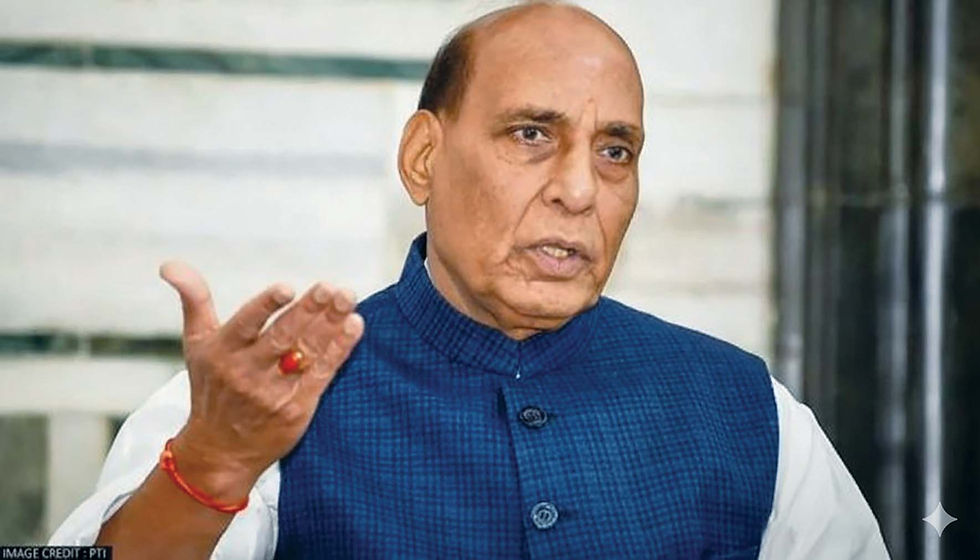Decoding Operation Sindoor: India’s Quiet Revolution in Warfare
- Commodore S.L. Deshmukh

- May 19
- 4 min read
By trading volume for velocity and muscle for machine learning, India signalled a profound doctrinal shift in its calibrated but devastatingly effective strikes against Pakistan.

When over two dozen Hindu tourists were gunned down in cold blood, singled out by religion and executed before their families by Pakistan-sponsored terrorists, India’s initial restraint was mistaken in Islamabad for timidity. Pakistan responded not with introspection, but with escalation by doubling down on hostile propaganda and proxy warfare. It miscalculated.
In the immediate aftermath of the Pahalgam massacre, India moved swiftly by first suspending the Indus Waters Treaty, then scaling down diplomatic ties and shuttering the Attari border crossing. Pakistan responded with symbolic measures of its own, including a ban on Indian flights through its airspace.
What was not in doubt was that India would strike back. But instead of indulging in chest-thumping rhetoric, it took a calculated pause by effecting a complete diplomatic isolation of Pakistan and biding its time. The result was Operation Sindoor, that has stirred patriotic fervour across the country. India’s retaliation targeted nine terrorist camps inside Pakistan. When Pakistan retaliated with their foreign-made drones, indigenous Indian defence systems proved a mighty match for the enemy, smashing its Chinese and Turkish supplied weapons to bits. A number of vital Pakistani airbases were hit in the retaliatory strikes like Bholari, Nur Khan base (now finally admitted by Pakistani PM Shehbaz Sharif himself) among others, sparking intense fears about a possible hit to Pakistan’s nuclear installations.
The unmistakable message was that henceforward, all of Pakistan was fair game and lay within India’s striking capability in the event the former attempted something as nasty as the Pahalgam massacre.
The operation marked a watershed in India’s strategic posture. It demonstrated a new doctrine - leaner, smarter and asymmetric. At the heart of it was an unprecedented reliance on unmanned aerial platforms. Swarms of cheap, expendable drones, including Sky Striker kamikaze units, delivered precision strikes while minimizing risk to human life. Prime Minister Narendra Modi hailed the move as a leap into the era of high-tech deterrence. India, he declared, had arrived as a drone power.
Operation Sindoor was a technological showcase of real-time intelligence, probabilistic targeting and scalable, low-cost warfare. In avoiding traditional air combat systems, India signalled not just intent, but innovation.
On the flip side, it also highlighted the increasing risks posed by use of drones by the enemy side. Interception of 300 to 400 Turkish-made drones across 36 locations demonstrated the scale and ambition of Pakistan’s drone operations. It was a stark reminder that the skies are no longer sovereign, and that the very tools India deployed with such success could easily be turned against it. It was a lesson for India to be prepared with anti-drone technologies.
During the conduct of the operation, India unambiguously displayed its excellent capabilities of deploying Layered defence using indigenous capabilities, which refers to a military strategy that employs multiple layers of defence, utilizing domestically developed technologies and systems. to the world. It showcased to the world its new strategic philosophy using high tech integration and technological self-reliance. Indigenous Systems like Akash and Brahmos, combined with advanced imported platforms like the S-400 and the Barak-8, constituted a multi-layered air defence network capable of responding to variety of aerial threats. Advanced digital capabilities of the Akashteer system reflected India’s evolution from rigid defence systems to smart, adaptive networks. This capacity-building pointed to India’s increasing quest for both strategic and technological independence, by coupling its military prowess to increasing domestic innovation and self-development, minimizing its foreign dependency and enhancing strategic autonomy.
The current standoff also brought a new dimension to information warfare. Pakistan made numerous efforts to wage psychological warfare, using digital platforms for perception management, spread of misinformation, on a large scale through doctored videos, manipulated social media narratives, and the creation of strategic ambiguity, similar to that seen in the Israel-Palestine and Russia-Ukraine conflicts. India, though prepared, was found somewhat wanting in countering such operations. But learning its lessons, it has started upgrading its technological infrastructure, media environment and strong institutional communication capabilities.
During this operation, India also displayed its strategic and doctrinal shifts to good effect, surprising the world by its response which was a deliberate and calibrated deterrence strategy. Shunning a full-scale war, it effectively opted for a posture that signaled to the world its strengths, while retaining its ability to maintain diplomatic maneuvering space. It was a welcome departure from India’s traditional binary of peace versus war. Prime Minister Modi’s speech on May 12, deftly articulated this shift, emphasizing the concept of new normal in new age warfare, marking a transition from a defensive posture to a proactive, technology-enabled warfighting doctrine. This sent an unambiguous message to the world in general and Pakistan in particular.
This operation also displayed to the world India’s unprecedented levels of coordination among its valiant armed forces. Its Integrated Air Command and Control System (IACCS) worked as the operational backbone for synchronized, effective, and real-time joint operations. This highlighted India’s matured strategic architecture and the growing importance of interoperability in contemporary warfare.
India, however, must brace for the unceasing evolution of military planning, intelligence architectures and cybersecurity protocols in the years ahead as adaptation is no longer a luxury, but a strategic necessity.
(The author is a retired naval aviation officer and defence analyst. Views personal.)





Indepth analysis of information about India's innovative technolgy dominant precise and devastating attackattack on terrorist Pakistan.
It elaborates how India evolved unimaginable plan,diabolic mindset of PakPak and need of further upgradation of warfare technology.Operation SindurSindur doesn't display only IndiaIndia's technological competence but strategical confidenceconfidence smart warfare. Great work Mr. Deshmukh.